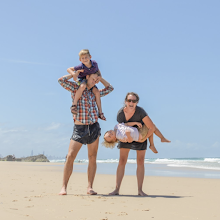Last week felt it like something
was terribly wrong with Tate. He seemed to have shed his cheerful self and
revealed an irritable, demanding, dissatisfied little tyrant.
For example, he became obsessed
with wanting the cleaning spray bottles. When I stuck firm to the boundaries
that children are not allowed to have the cleaning spray bottles because they
have chemicals in them, he threw terrible, protracted screaming and crying
fits.
Things that he used to do easily
(like take a bath and eat meals with the family) became battles. Putting him to
sleep at night went from kissing him on the cheek and closing the door to 1.5
hours of screaming and crying.
Oy!
When I talked with my Montessori-trainedfriend about it, she explained that he is likely entering the Crisis of
Self-Affirmation. In the middle of the night, I couldn’t fall back asleep
because I was stressed out about Tate and stressed about giving 30 visitors a
tour of our school during SXSWedu, so I found and read some information about
the Crisis of Self-Affirmation on Meg's website:
At around 18 months of age, the child enters into the crisis of self-affirmation, sometimes called the crisis of opposition. The beginning of this period is marked by the use of the word “no”. This period is an ambivalent time for the child, who is leaving her infancy behind and moving towards childhood. She is torn between the drive to move forwards and become independent, and the desire to remain within the protective and nurturing circle that her mother provides. The child demonstrates her desire for self-affirmation through her activities and her language which are directed towards affirming herself as an individual. In the preceding period, particularly the symbiotic period, the child’s trust in the world is established. During the crisis of self-affirmation, the child’s trust in herself is established. This is when the child moves from believing that they are capable, to knowing that they can do things. She is no longer content with watching, she wants action, and most importantly she wants to be a collaborator. So we need to provide plenty of chances for her to do things, even if we think she might not be able to do them!
Silvana Montanaro advises parents that “behind the child’s ‘no’, is the desire to be recognised as a person who is already able to resolve many problems related to him...and to ask for his opinion much more often than is generally done.” She stresses that she is “not suggesting that it should be left to children to decide what to do. The idea is to simply avoid giving only orders and to leave a choice between alternatives when it is possible. In this period what really counts is helping the child to verify the importance of his presence in the family. Real collaboration comes only from those who do not feel overpowered and can contribute freely. We are not risking anything by offering choices, while the child gains very much, because we demonstrate that we consider him able to choose and that we respect his judgement. “
The end of this crisis is marked by the child’s use of the pronoun, “I”. This is the sign that he has really integrated himself as an autonomous human being. He understands that he is unique and not really a part of anyone else, but separate and individual.
“By the age of three, the model for the human being that is developing within the child is complete. Crisis periods are favourable for change, not only in children, but in all who participate in them.” – Understanding the Human Being, Silvana Montanaro
Yes, that’s exactly it!
The trick is to muster up and
maintain the kind of patience it takes to parent a child who is in this stage.
Their behavior makes us less patient—just when they need more patience. Their
behavior makes us less supportive—just when they need more support. Their
behavior makes us less loving—just when they need more love. I’m reminded of
this advice from Sonnie McFarland, one of my Montessori trainers:
When we see our children as divine being striving to develop their
human potentials, rather than willful children purposely annoying us, we will
approach them from an entirely different perspective.
What a big challenge!
For me, providing the patience,
support, and love that Tate needs looks like going back to my Montessori roots.
I need to infuse more Practical Life opportunities into Tate’s day!
These ideas include:
- Creating more opportunities for
him to help in the kitchen.
- Setting up Tate’s closet so that
he can independently access and choose his own clothes.
- Keeping his kitchen drawer stocked
with glasses.
- Teaching him how to use a stool to
access the water dispenser in the refrigerator.
Doing real work alongside adults
helps children feel useful and powerful. It builds their self-confidence and
their sense of self-worth. It helps them weather the Terrible Two’s and come
out stronger.
I remember that Henry seemed toskip over the Terrible Twos and I wonder if it was because I was in a much
better place to honor and meet his needs. I picked him up from school in the
early afternoon every day and followed his lead while he prepared and cleaned
up his snack. Then I let him take the lead at the park. He would independently
explore while I followed him at a safe distance. Those were the days!
I can work to build more of these things into
Tate’s daily experience. And whatever I can’t do for Tate I will need to
forgive myself for. There are definite drawbacks from being the second child,
but there are also benefits. I think it balances out!





















